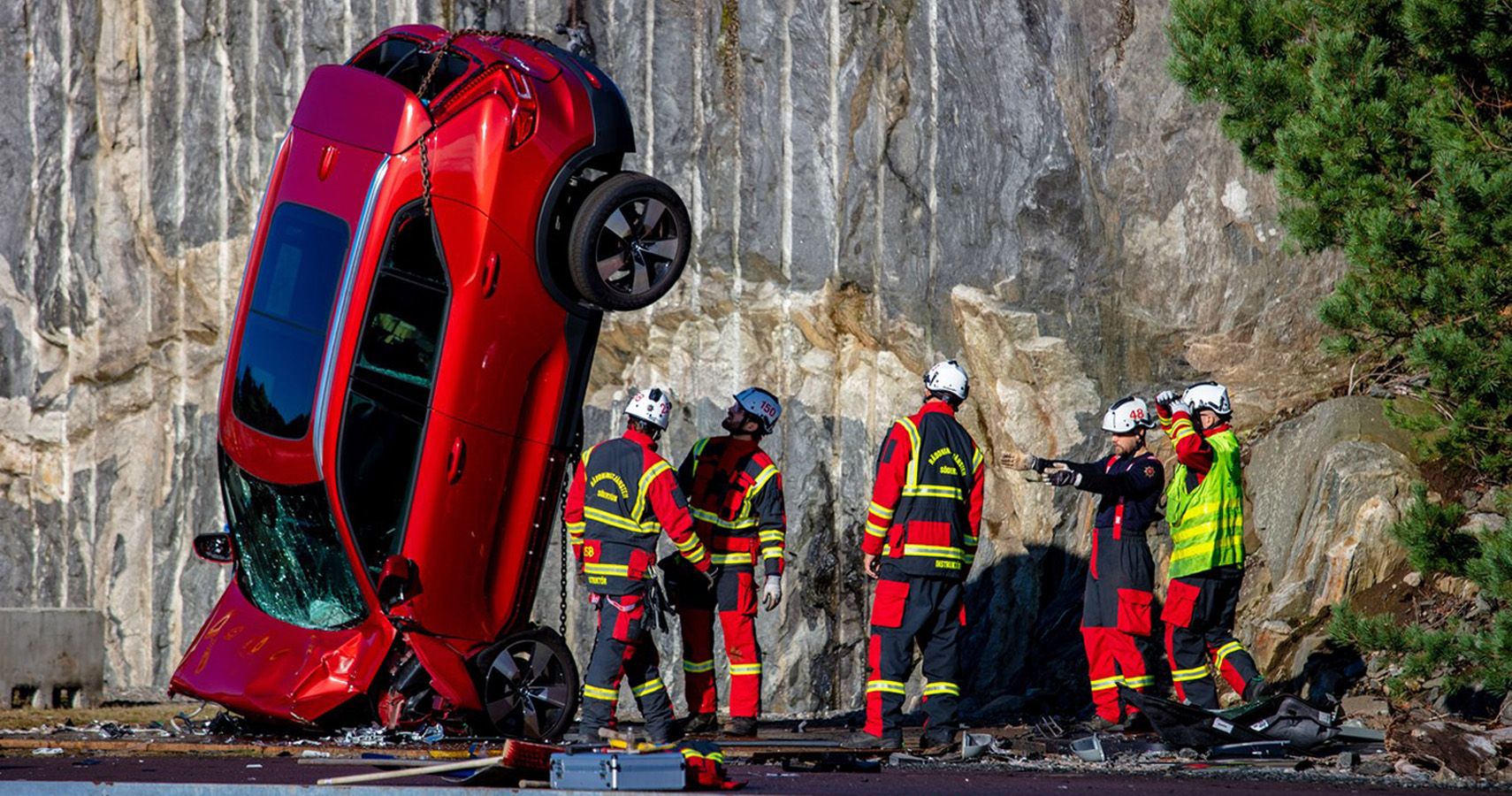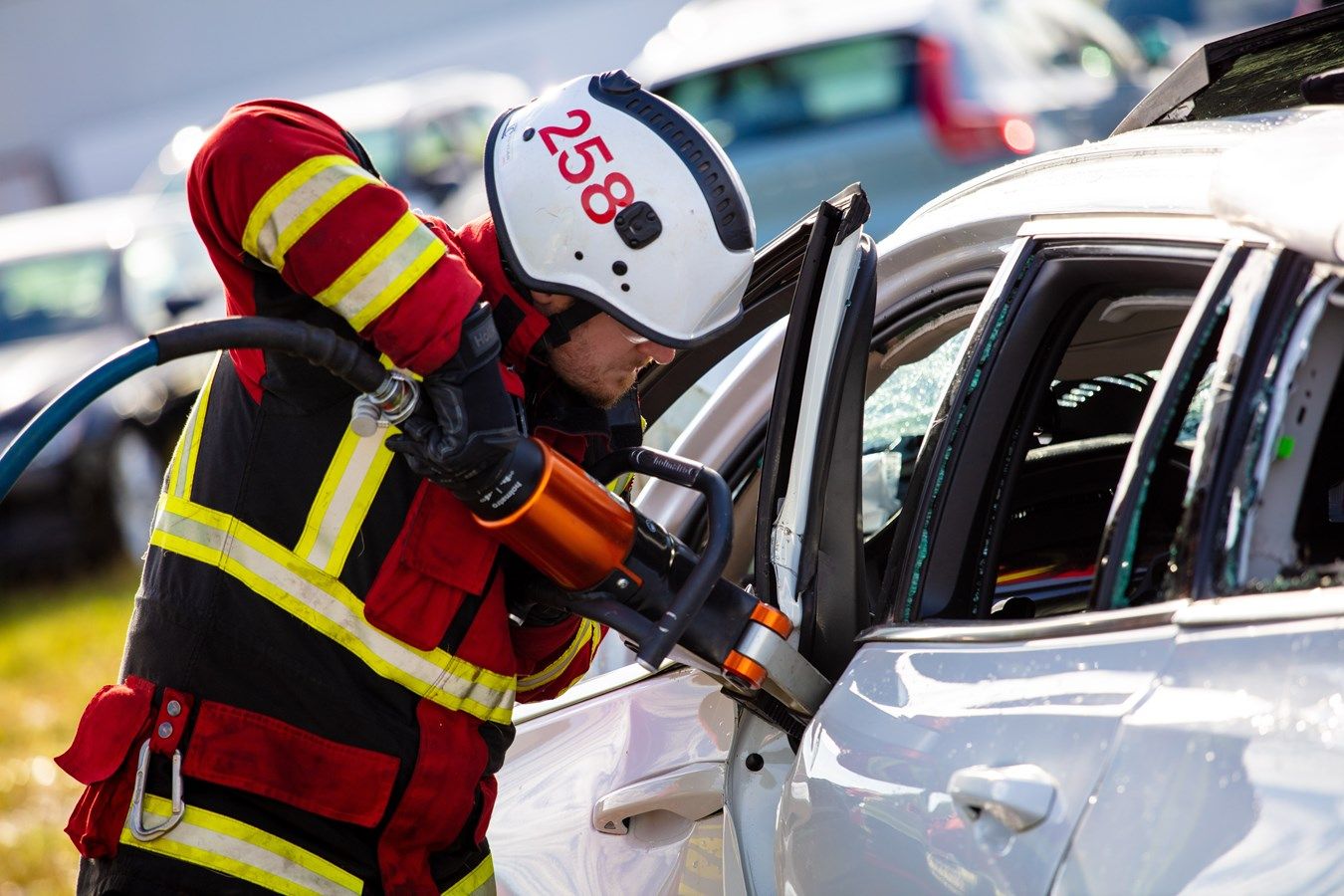If there’s anything to know about Volvo, it's that they will stop at nothing in their pursuit of automotive safety. Not too long ago, Volvo’s Accident Research division celebrated 50 years of cooperation with Swedish services. Now, the safety marque is giving back.
Volvo Drops XC40 100 Feet In The Air
Volvo took it upon themselves to crash new cars by dropping them from a crane some 100 feet high. This is done to simulate such extreme scenarios in which the persons involved may sustain life-threatening injuries and have to be taken to the hospital right away. It is then up to rescue services to extricate them from their wrecked cars.
"We have been working closely together with the Swedish rescue services for many years," says Håkan Gustafson, a senior investigator of the Volvo Cars Traffic Accident Research Team. "We hope no one ever needs to experience the most severe accidents, but not all accidents can be avoided."
Extrication specialists will use hydraulic tools, such as ‘the jaws of life,’ in order to get to them. The goal is to access the cars as quickly as possible. However, there are challenges that impede their time-sensitive goal.
Preparing For The Worst-Case Scenario
Volvo notes that most extrication specialists practice on cars typically salvaged from scrapyards. Chances are these cars are about fifteen to twenty years old, and thus, have been built to safety standards that are different today.
New cars today are working with stronger roll cages, stiffer chassis, and steel that is more durable. This doesn’t guarantee the most optimal result for the occupants so the Geely-owned company prepares for the worst-case scenario. The solution? Drop new Volvo cars in a controlled environment for service workers to practice on.
Volvo Dropped Ten Different Model Cars
Ten cars, all different models, were meticulously dropped from the crane on a concrete platform. Before release, safety engineers made necessary calculations to better achieve the results they wanted; a salvaged wreck of a challenge for rescue services to breach through. Doing so successfully would enable them to collect results, review extrication techniques, and familiarize themselves with stronger new models.
"Normally we only crash cars in the laboratory, but this was the first time we dropped them from a crane," says Gustafson. "We knew we would see extreme deformations after the test, and we did this to give the rescue team a real challenge to work with."
Volvo is a company that literally takes science to new heights. Between striving for their goal to zero and the upstart of their electrified performance brand, it's nice to see them willing to experiment new ways to practice for a safer world — and sacrifice a few cars in the process.



